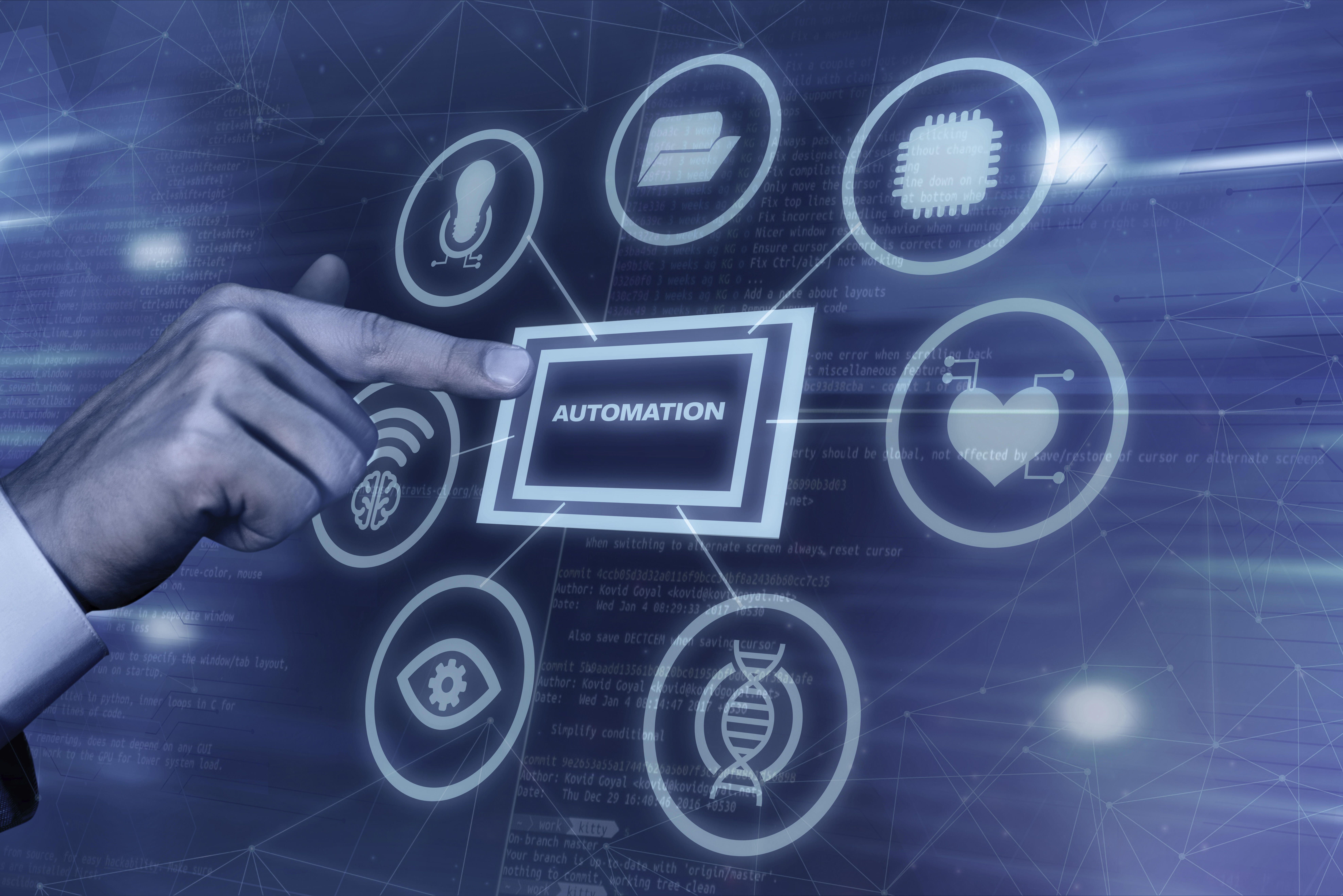AI Terminology: A Complete Guide to Understanding Key AI Terms
What is AI Terminology?
AI terminology refers to the specialized language and vocabulary that has developed within the field of artificial intelligence (AI). It encompasses a wide range of terms, concepts, and definitions that are used by professionals, researchers, students, and enthusiasts to communicate clearly and effectively about AI technologies. These terms are essential for discussing the various techniques, processes, and methodologies that power AI systems, including machine learning, deep learning, neural networks, natural language processing (NLP), computer vision, and more.
By familiarizing oneself with AI individuals can gain a deeper understanding of the underlying principles and mechanisms that make AI technologies function. For instance, terms like "supervised learning," "reinforcement learning," and "convolutional neural networks" are commonly used to describe specific types of machine learning and deep learning models. Additionally, understanding helps individuals interpret and engage with academic papers, research findings, and industry reports, as these documents often contain advanced technical language that assumes familiarity with AI terms.
Why Understanding AI Terms is Important for Beginners
For beginners, learning AI terms can be an overwhelming task due to the technical nature of the subject. However, mastering the language of AI is essential for several reasons. First, it allows you to build a strong foundation for further learning. When you encounter complex AI concepts or research papers, knowing the right terms helps you understand the content more effectively. It also boosts confidence when engaging with experts or participating in discussions about AI. Without understanding the terminology, you may struggle to make sense of the different AI technologies and their practical implications.
Overview of Key Concepts in Artificial Intelligence
AI encompasses a wide range of topics, and each concept is tied to specific terminology. Some of the core areas include machine learning, neural networks, natural language processing (NLP), and computer vision. Machine learning focuses on algorithms that enable machines to learn from data without being explicitly programmed. Neural networks are inspired by the human brain and are used for tasks such as pattern recognition. NLP deals with the interaction between computers and human languages, while computer vision involves teaching machines to interpret and understand visual data. Understanding these key concepts and the associated terms is fundamental to delving deeper into AI.
What are the Common Artificial Intelligence Terms you Should Know?
When diving into the world of AI, there are several key concepts and techniques you will encounter. Understanding these fundamental artificial intelligence terms is essential for anyone looking to explore AI technologies. Here are some of the most common and crucial terms you should be familiar with:
Artificial Intelligence (AI)
Artificial Intelligence, or AI, is the broad field of computer science focused on creating systems that can perform tasks typically requiring human intelligence. These tasks include problem-solving, pattern recognition, and decision-making. AI systems are designed to analyse data, learn from it, and make informed predictions or decisions without human intervention. It is the umbrella term under which other subfields like machine learning and deep learning fall.
Machine Learning (ML)
Machine Learning (ML) is a subset of AI that involves teaching machines to recognize patterns in data and make decisions based on that data. ML algorithms allow systems to improve their performance over time as they process more data. Unlike traditional programming, ML systems learn and adapt without being explicitly programmed to perform every task.
Deep Learning (DL)
Deep Learning (DL) is a specialized area within machine learning that uses multi-layered neural networks to analyse complex data patterns. Deep learning is particularly useful for tasks such as image recognition, speech processing, and natural language understanding. It mimics the human brain’s neural structure to make highly accurate predictions from large amounts of data.
What is a Breakdown of Artificial Intelligence Terminology?
Understanding AI terminology is crucial for anyone delving into the world of artificial intelligence. By breaking down key terms into simpler language, you can gain a clearer understanding of how these concepts work together to form the foundation of AI systems. Let’s explore some important distinctions and concepts to help you understand AI better.
Defining Key AI Terms in Simple Language
At its core, artificial intelligence refers to machines that can simulate human-like intelligence. This includes performing tasks such as problem-solving, learning, and decision-making. Machine learning is a subset of AI that focuses on the ability of machines to learn from data and improve over time, without being explicitly programmed. Deep learning, a more advanced form of machine learning, uses artificial neural networks to mimic the human brain’s structure and analyse complex patterns in data.
AI vs. Machine Learning vs. Deep Learning: Understanding the Differences
It’s important to differentiate between AI, machine learning, and deep learning. AI is the overarching field that involves creating intelligent systems. Machine learning is a method used within AI to help machines learn from experience. Deep learning, on the other hand, is a specialized technique within machine learning that uses layered neural networks for more complex tasks, like image recognition or natural language processing. By understanding these distinctions, you can better navigate the various AI technologies in use today.
Key AI Concepts and Their Real-World Applications
AI is not just a theoretical concept; it has real-world applications across many industries. For example, machine learning algorithms are used in recommendation systems, fraud detection, and predictive analytics. Deep learning powers technologies like self-driving cars, facial recognition, and speech recognition systems. By understanding these key AI terms and their practical uses, you can see how they contribute to the ongoing development of intelligent systems.
What is the Understanding of the Artificial Intelligence Words List?
To truly grasp the world of AI, it's important to familiarize yourself with the key terms and their meanings. An artificial intelligence words list provides a comprehensive collection of essential vocabulary used in AI. By understanding these terms, you can gain insight into the underlying concepts and technologies that power AI systems. Here’s a closer look at what an AI words list contains and how it can enhance your learning experience.
A Glossary of Must-Know AI Terms
An AI words list typically includes foundational terms like artificial intelligence words list, Machine Learning (ML), Neural Networks (NN), and Natural Language Processing (NLP). These are terms you’ll frequently encounter in AI literature, research, and applications. The list can also include more specialized terms like Reinforcement Learning (RL), Deep Learning (DL), and Computer Vision (CV), which represent subfields and specific techniques within AI. Understanding the meanings of these terms helps you better comprehend how AI works and how it's used in real-world applications.
Examples and Use Cases for Each Term
Once you’re familiar with the terms, it’s important to explore examples and use cases for each. For instance, machine learning algorithms are used in applications like email spam filters, recommendation systems on streaming platforms, and fraud detection in financial transactions. Deep learning powers technologies like self-driving cars, facial recognition, and voice assistants. By linking these terms to real-world examples, you can see their practical applications and how they are transforming industries.
Visualizing AI Terms: Diagrams and Simple Explanations
To make AI terms even easier to understand, visualizing them through diagrams and simple explanations can be incredibly helpful. For example, a flowchart showing how machine learning works or a diagram illustrating how neural networks process data can make abstract concepts more concrete. Visual aids help solidify your understanding of complex AI words and make learning more interactive. By breaking down the terminology in this way, you can better appreciate the intricacies of AI and its potential.
What are the Categories of AI Terminology?
Understanding the different categories of AI terminology helps break down complex concepts into manageable parts. These categories cover various learning methods, neural network architectures, and algorithm types, each serving a unique role in the AI development process. By organizing terms into these groups, beginners can more easily navigate the foundational elements of artificial intelligence.
Supervised Learning, Unsupervised Learning, and Semi-Supervised Learning
One major way to categorize AI terms is by the type of learning involved. Supervised learning refers to training a model on a labelled dataset, where the input data is paired with the correct output. This approach is widely used in tasks such as spam detection, image classification, and speech recognition. In contrast, unsupervised learning involves training a model on data without labelled outputs. The model independently identifies patterns, groupings, or structures within the data, making it useful for applications like market segmentation and customer profiling. Semi-supervised learning combines both methods by using a small amount of labelled data along with a large volume of unlabelled data. This approach is especially valuable when labelling is costly or time-consuming, but abundant data is available for training.
Types of Neural Networks: CNNs, RNNs, and More
Neural networks also fall into specific types.
Convolutional Neural Networks (CNNs) are commonly used for image-related tasks like object recognition and facial detection.
Recurrent Neural Networks (RNNs) are ideal for sequence data, such as time-series predictions and natural language processing.
Algorithms in AI: Regression, Classification, and Clustering
AI algorithms can also be categorized based on the type of task they are designed to perform. Regression algorithms are used to predict continuous values, such as estimating housing prices or forecasting stock trends. Classification algorithms assign data into predefined categories, which is useful for tasks like identifying spam versus non-spam emails or diagnosing diseases from medical data. Clustering algorithms, on the other hand, group similar data points together without the use of labelled outputs. This approach helps uncover hidden patterns or structures within the data, making it ideal for applications like customer segmentation and anomaly detection.
How AI Terminology is Evolving?
As the field of artificial intelligence rapidly advances, the language used to describe it is also evolving. New techniques, tools, and applications give rise to fresh terms, while older ones are constantly being refined or redefined. Staying updated on the latest changes in AI vocabulary is crucial for anyone interested in the field, whether you're a student, a professional, or simply an AI enthusiast.
New Terms and Concepts in the AI Space
The last few years have introduced a wave of new concepts driven by cutting-edge research and technological breakthroughs. Terms like Generative AI, foundation models, and prompt engineering have gained popularity thanks to the rise of large-scale AI systems such as ChatGPT and DALL·E. These systems generate text, images, and code based on minimal user input, leading to new ways of thinking about human-computer interaction.
The Future of AI Terminology
The evolution of AI is far from over. As AI becomes more deeply integrated into everyday life—from healthcare and education to finance and entertainment—new use cases will demand new language. We may see terminology expand to include concepts that bridge AI with other emerging technologies like quantum computing, edge AI, and human-AI collaboration.
Why AI Terminology is Crucial for your AI Learning Journey?
When starting your AI learning journey, understanding the correct language is just as important as grasping the technical concepts. Mastering helps you build a strong foundation, making complex ideas easier to understand and apply. It also boosts your ability to communicate effectively within the AI community, whether in academic settings, professional environments, or online forums.
How Understanding AI Terms Helps in Learning AI
Learning AI involves studying a wide range of concepts, from algorithms and data structures to neural networks and deep learning techniques. Without a clear understanding of the basic terms, it can be overwhelming to make sense of how these elements fit together. Knowing what terms like "supervised learning," "reinforcement learning," or "natural language processing" mean gives you a roadmap for deeper study. It also helps you quickly interpret research papers, tutorials, and course materials without constantly feeling lost. In essence, mastering the language of AI removes barriers to learning and accelerates your progress.
Using AI Terminology in Practical Applications
Understanding AI is not just important for academic success; it is equally crucial when applying AI knowledge in real-world projects. Whether you're developing a machine learning model, building an AI-driven app, or analysing large datasets, using the correct terms allows you to design better solutions and collaborate more effectively with others. For instance, being able to differentiate between classification and clustering algorithms ensures you select the right method for your task. In team environments, clear communication using accurate AI terms prevents misunderstandings and streamlines project development. As AI continues to grow across industries, having a solid grasp of the terminology will position you to contribute confidently and creatively to innovative projects.
Conclusion
Understanding AI terminology is essential for building a strong foundation in artificial intelligence. Throughout this guide, we explored key artificial intelligence terms, broke down important concepts, and highlighted how mastering artificial intelligence terminology supports both learning and real-world application. A good grasp of the artificial intelligence words list empowers you to communicate clearly, study more effectively, and innovate confidently in the AI field. For those eager to dive deeper, many resources are available, including online courses, glossaries, and beginner-friendly books, all designed to strengthen your knowledge and keep you updated on the evolving AI landscape.









